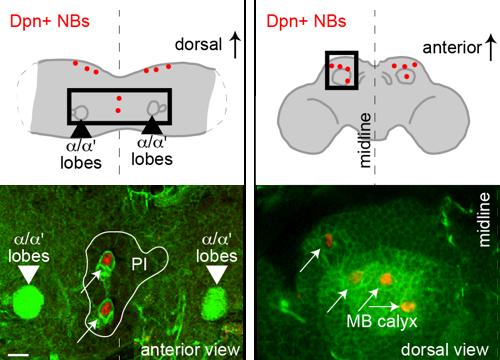
Correct positioning of stem cells within their niche is essential for tissue morphogenesis and homeostasis. Yet how stem cells acquire and maintain niche position remains largely unknown. Here, we show that a subset of brain neuroblasts (NBs) in Drosophila utilize PI3-kinase and DE-cadherin to build adhesive contact for NB niche positioning. NBs remain within their native microenvironment when levels of PI3-kinase activity and DE-cadherin are elevated in NBs. This occurs through PI3-kinase dependent regulation of DE-Cadherin mediated cell adhesion between NBs and neighboring cortex glia, and between NBs and their GMC daughters. When levels of PI3-kinase activity and/or DE-Cadherin are reduced in NBs, NBs lose niche position and relocate to a non-native brain region that is rich in neurosecretory neurons, including those that secrete some of the Drosophila insulin-like peptides. Linking levels of PI3-kinase activity to strength of adhesive attachment could provide cancer stem cells and hematopoietic stem cells a means to cycle from trophic-poor to trophic-rich microenvironments.